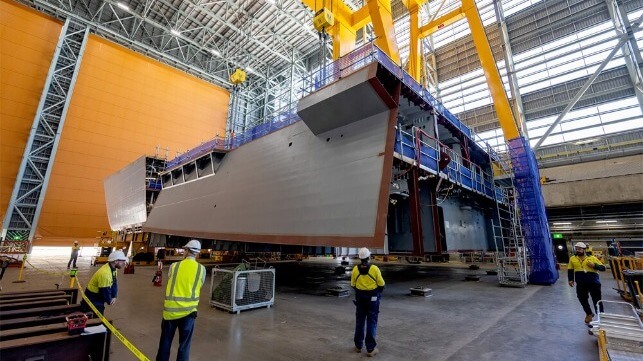Reuters | December 20, 2024

Stock image.
It’s been a brutal year to be in the battery metals business.

Prices of lithium, nickel and cobalt collapsed in 2023 and have continued grinding steadily lower over the course of 2024.
A sector that was once racing to build new supply has been closing mines and deferring projects as low prices bite into the cost curve.
The road to an electric future has turned out to be much bumpier than expected with demand from the all-important electric vehicle (EV) sector not living up to expectations.
This is also a story of massive oversupply with too much new capacity brought online at exactly the wrong time.
And it will be supply discipline, or the lack of it, that will determine whether there will be any price recovery in 2025.

The global EV market is still expanding.
November was another record-breaking month with 1.8 million units sold, according to consultancy Rho Motion. Global sales growth over the first 11 months was an impressive 25% relative to 2023.
But the positive headlines mask two unwelcome truths for the battery metals sector.
China is still the main driver of the EV revolution with Western markets struggling to build momentum.
While Chinese sales set a new monthly record in November, those in the United States and Canada were up by just 10% year-on-year in November and those in Europe were actually lower.
Western consumers still need an incentive to make the switch from internal combustion engine to electric motor. German new-energy vehicle sales have slumped this year after subsidies were abruptly removed at the end of 2023.
US subsidies could go next year if Donald Trump makes good on his threat to roll back the Biden administration’s EV policy.
The second reality check is that many EV buyers, particularly those in the critical Chinese market, are opting for hybrids or plug-in-hybrids over battery electric vehicles.
These have batteries about a third of the size of those used in pure battery models, meaning a similar-sized reduction in all the metallic cathode inputs.
Chemistry experiment
Some offset for lithium demand comes from the rising market share of lithium-iron-phosphate (LFP) batteries, which accounted for two-thirds of all EV sales in China last year, according to the International Energy Agency.
LFP batteries are cheaper than nickel-rich chemistries and Chinese battery-makers have improved their performance to the point that CATL’s latest Shenxing Plus model boasts a single-charge driving range of over 1,000 kilometers.
They are, however, bad news for nickel, cobalt and manganese markets.
The amount of lithium deployed on the road in new EV sales was almost 48,000 metric tons in October, up 28% year-on-year, according to consultancy Adamas Intelligence.
However, the deployment of nickel, manganese and cobalt was up by just 10%, 4% and 2% respectively, reflecting both the shift to hybrids and the changing battery chemistry mix.
Supply flood
Lower-than-expected demand from the EV sector, particularly outside of China, has coincided with supply surges across the battery metals spectrum.
BHP’s Nickel West was supposed to be the miner’s showcase green metals hub. It was shut down in October due to low prices caused by massive overproduction in Indonesia.
Chinese nickel producers have made the technical leap of processing Indonesia’s relatively low-grade ore into high-purity Class I metal. Combined Sino-Indonesian production will grow by 30% this year, according to Macquarie Bank.
At least the Indonesian authorities have shown signs of supply discipline, restricting mining quotas and placing a moratorium on approvals for new processing plants.
China’s CMOC Group, the world’s largest cobalt producer, seems oblivious to the price implosion. It reported output of 84,700 tons in January-September, up from 37,000 tons in the year-ago period.
Such is the scale of oversupply in the cobalt market that Chinese stockpile managers have been able to scoop up significant tonnages without any obvious market impact.
Chinese lithium producers are also resisting production cuts. Many are vertically integrated, meaning losses in the ground can be offset against gains further down the processing chain.
Even allowing for the many price casualties among Western operators, lithium supply is still expected to exceed demand for the third year running in 2025, according to consultancy Benchmark Mineral Intelligence.
The supply overhang should shrink to less than 1% of demand from close to 10% last year, which may limit further price weakness.
Supply surplus in the nickel and cobalt markets, by contrast, risks becoming structural until production is more closely aligned with demand.
Trade tensions
Given such negative supply-demand dynamics, it’s not hard to see why the analyst consensus is for more producer price pain in the coming months.
China is a dominant player in all three markets and shows no signs of giving up on its own electric dreams.
This, though, is a point of rising tension with the United States.
The final report of the Critical Minerals Policy Group, part of a Select Committee on US-Chinese relations, accused Chinese lithium producers of driving prices lower “through a mix of dumping and overproduction”.
China, the report said, “uses price controls, vertical integration, and substantial barriers to entry to preclude competition”.
Joe Biden and Donald Trump may disagree on electric vehicles but there is remarkable bipartisan agreement on the need to build domestic battery metal capacity and loosen China’s grip on the global supply chain.
Trump 2.0 is likely to crank up the Biden administration’s combination of federal spending and tariffs on Chinese metals.
US trade policy will add yet another moving part to an already complex battery metals market dynamic.
Indeed, if the US tariff walls are built high enough, there’s a risk the global market will start fracturing into Chinese and US pricing spheres.
(The opinions expressed here are those of the author, Andy Home, a columnist for Reuters.)
(Editing by Kirsten Donovan)







